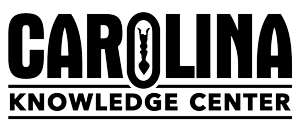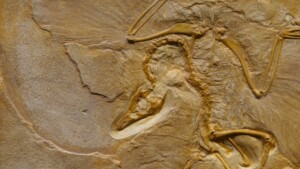Wetland Feedback Loops
A Carolina EssentialsTM Activity

Total Time: 40-60 mins
Prep: 30 mins | Activity: 45-60 mins

Earth and Space Science
9-12
High School
- Total Time: 45-60 minutes [ Prep: 30 mins | Activity: 45-60 mins ]
- Subject: Earth and Space Science
- Grade: High School
Overview
Wetlands are diverse and critical habitats that range from coastal saltwater marshes to freshwater swamps to soggy areas surrounding a pond. With the diversity in a wetland habitat comes a variety of ecosystem services such as water reservoirs, nesting grounds for birds, nurseries for amphibians, and contributions to atmospheric humidity. Changes in wetland surface area can have multiple impacts, locally and regionally, on species diversity, food chain connections, and atmospheric humidity, all of which are parts of feedback loops. This activity is a short modeling exercise for students to collect evaporation rate data for simulated wetlands and to connect evaporation rate to ecosystem impacts.
Phenomenon
Teacher demonstration: Saturate a whole sheet and a half sheet of paper towel. Ask students to predict which paper towel holds the greatest volume of water. Squeeze as much water as possible from the paper towels into 2 graduated cylinders to confirm or reject their hypothesis. Ask students this question: how does the availability of stored water affect an ecosystem?
Essential Question
How can one change to Earth’s surface create feedback that causes changes to other systems?
Activity Objectives
- Collect data to calculate evaporation rate.
- Relate evaporation rate to atmospheric humidity.
- Explain how the extent of wetlands affects atmospheric humidity.
Next Generation Science Standards* (NGSS)
HS-ESS2-2. Analyze geoscience data to make the claim that one change to Earth’s surface can create feedbacks that cause changes to other Earth systems.
SCIENCE & ENGINEERING PRACTICES
Analyzing and Interpreting Data
- Analyze data using tools, technologies, and/or models (e.g., computational, mathematical) in order to make valid and reliable scientific claims or determine an optimal design solution.
DISCIPLINARY CORE IDEA
ESS2.A: Earth Materials and Systems
- Earth’s systems, being dynamic and interacting, cause feedback effects that can increase or decrease the original changes.
ESS2.D: Weather and Climate
- The foundation for Earth’s global climate systems is the electromagnetic radiation from the sun, as well as its reflection, absorption, storage, and redistribution among the atmosphere, ocean, and land systems, and this energy’s reradiation into space.
CROSSCUTTING CONCEPTS
Stability and Change
- Feedback (negative or positive can stabilize or destabilize a system.
Materials
- 2 paper towels (1 cut in half)
- 2 graduated cylinders, 10 mL
- 2 dry kitchen sponges, 2.5 × 4.0 in
- 3 clear plastic punch cups, 9 oz
- Scissors
- Marker
- Tap water
- Balance (readability 0.1 g)
- Stopwatch or smartphone
- Access to the outdoors on a sunny day or lamps with incandescent bulbs
Safety Procedures and Precautions
No PPE is required for the activity.
Teacher Preparation and Disposal
Gather materials. To save student time, you can precut the sponges. Materials may be saved for additional activities or disposed of in the trash.
Lorem ipsum dolor sit amet, consectetur adipiscing elit. Ut elit tellus, luctus nec ullamcorper mattis, pulvinar dapibus leo.
STUDENT PROCEDURES
- Using the bottom of the punch cup as a pattern, trace 2 full circles and 1 half circle on the surface of a dry sponge.
- Cut out the full circles and half circle from the sponges.
- Place 1 full circle in a cup and label the cup “control.”
- Place the other full circle in a cup and label the cup “100% wetland coverage.”
- Place the half circle in a cup and label the cup “50% wetland coverage.”
- Weigh each of the cups to the nearest 0.1 g and record the masses in a data table.
- Add water to the last cup and using the pipet, add water to the 100% coverage and 50% coverage sponges until they are saturated. When they are saturated, you can gently push on the sponge and water will pool on the surface. There should not be any standing water in the cups. If there is standing water, pour it off.
- Weigh the 100% coverage cup and the 50% coverage cup again and record the masses in the data table
- Place the 3 cups outside in the sun or under a lamp with an incandescent bulb for 15 minutes.
- During the 15-minute heating period, investigate the U.S. Fish and Wildlife Service’s National Wetlands Inventory. Click on the map and accept the conditions. Complete the following:
- Use the legend to determine and list what categories of wetlands are shown.
- Name the large lakes in the northern central part of the United States, near the Canadian border.
- Name the large lake in the central western part of the United States.
- Use the legend to find the large forest/shrub wetland in Virginia and North Carolina. Name the area.
- Locate the Okefenokee Swamp and Wilderness. In what states is it located?
- Locate the Everglades in Florida. What category of wetlands is the Everglades?
- Weigh the 3 cups and record the masses in the data table.
- Place the 3 cups back under the heat source for an additional 15 minutes. While waiting, return to the National Wetlands Inventory and do the following:
- Locate your state. What types of wetlands are present?
- Zoom in on your town or city. What types of wetlands are present?
- Try to locate your school neighborhood. Where and what types of wetlands are close to school?
- Weigh all 3 cups and record the masses in the data table. Your teacher may ask you to complete an additional round of heating.
- Squeeze all the remaining water from each sponge into its cup, then compare the amount of water that did not evaporate from the sponges.
TEACHER PREPARATION AND TIPS
- Instruct students to place the first cup as close to the edge of the sponge as possible.
- A full circle and half circle can be cut from 1 sponge.
- It is important that the sponges are dry initially. The amount of water needed to saturate the sponges will change if the sponges are damp at the beginning
- Mass the 3 cups to at least the tenths place.
- Sample data was taken outside, on a sunny day, at a temperature of 83° F.
- Allow students to construct their own data table. Check to ensure that they record all data.
- (Answers to questions)
- Estuarine and Marine Deepwater, Estuarine and Marine Wetland, Freshwater Emergent Wetland, Freshwater Forested/Shrub Wetland, Freshwater Pond, Lake, Other, Riverine
- Superior, Huron, Ontario, Michigan, Erie
- Great Salt Lake
- Great Dismal Swamp National Wildlife Refuge
- Georgia and Florida
- Freshwater marsh
-
- Lamps required less time than heating outside.
- Student answers will vary.
- All materials can be reused.
Data and Observations
Sample data was taken outside, on a sunny day, at a temperature of 83° F.

Analysis & Discussion
Analysis
For each cup, calculate the amount of water that evaporated into the air.
Control = 0 g
100% = 1.1 g
50% = 1.0 g2. Calculate the rate of evaporation for each cup. Rate is amount of water lost (g) per unit of time (min).
Control = .1 g/45 min = 0.002 g/min
100% = 1.1 g/45 min = 0.02 g/min
50% = 1.0 g/45 min = 0.02 g/min
The dry sponge (control) had no water added to it that could then be evaporated, but it must have had residual moisture.3. Calculate the surface area of each sponge. Area of a circle is A = π r2.
Control and 100% saturated area = 3.14 x (2.8 cm)2 = 24.6 cm2
50% saturated area = 1/2 of 100% = 24.6/2 = 12.3 cm2
Discussion
Why was a saturated sponge used to represent wetlands?
A sponge absorbs, holds, and releases water just like the soils on both freshwater and estuarine wetlands.
2. Where does the process of evaporation take place within a liquid?
Evaporation only takes place at the surface of a liquid. As molecules gain kinetic energy, they reach a point where they have enough energy to escape the surface. This continues for layer after layer of molecules until all the liquid has evaporated.
3. Explain the factors that contribute to evaporation rate in a wetland?
The factors that contribute to evaporation include temperature, wind, relative humidity, and surface area. The higher the temperature, the greater the evaporation rate because molecules have more kinetic energy. Greater amounts of wind increase evaporation rate because molecules are physically removed from the surface by the wind. Once the air has reached saturation, evaporation rate lowers because the air cannot hold additional water vapor; and the greater the surface area, the more molecules there are exposed to the radiant energy of the sun and wind, so evaporation will increase.
4. Use your data to explain which wetland coverage contributed the most water vapor to the atmosphere.
From the data above, the 100%coverage wetland contributed the greatest mass of water vapor to the atmosphere—1.1 g compared to 1.0 g for the 50% coverage.
5. Compare the mass of water evaporated to the surface area of the sponges. Explain any differences.
100% coverage = 1.1g/24.6 cm2 = 0.045 g/cm2
50% coverage = 1.0g/12.3 cm2 = 0.081 g/cm26. Compare wetland coverage and evaporation rate.
The rate of evaporation was the same for the 100% and 50% coverage cups. Since both cups were placed in the same conditions of temperature, wind, and relative humidity, and the size of the wetland was very small compared to a natural setting, this result is not surprising. However, with the evaporation rate being the same, the sponge (wetland) with the least amount of water should completely dry out first. Neither sponge was left long enough to dry completely.
7. What would you predict to be the effect on a wetland ecosystem if the amount of water evaporating from the wetland decreased over time?
If the amount of water evaporating decreased, then relative humidity would decrease, possibly leading to a decrease in cloud cover and rainfall.
8. Use your data to construct a model of a feedback loop that predicts how a decrease in wetland coverage, total water vapor added to the atmosphere, evaporation rate, and rainfall are related. Identify if this is an example of a positive or negative feedback loop. Your model may be prose, a graphic, or a flow chart.
Student answers will vary but the key points in the model are:
- Decrease in wetland surface area decreases the total amount of water vapor in the air (decreased relative humidity)
- Evaporation rate may remain constant, drying out areas that are less saturated
- Decreased relative humidity in turn decreases cloud cover and rainfall
- Decreased rainfall means less surface area covered in water, decreasing the total wetland surface area again
- The cycle will continue until the wetlands dry out completely or until the ecosystem is restored
This is an example of a negative feedback loop.
SHOP THE KIT
REFERENCE KITS
HELPFUL LINKS
VIEW MORE ESSENTIALS
*Next Generation Science Standards® is a registered trademark of Achieve. Neither Achieve nor the lead states and partners that developed the Next Generation Science Standards were involved in the production of, and do not endorse, these products.







